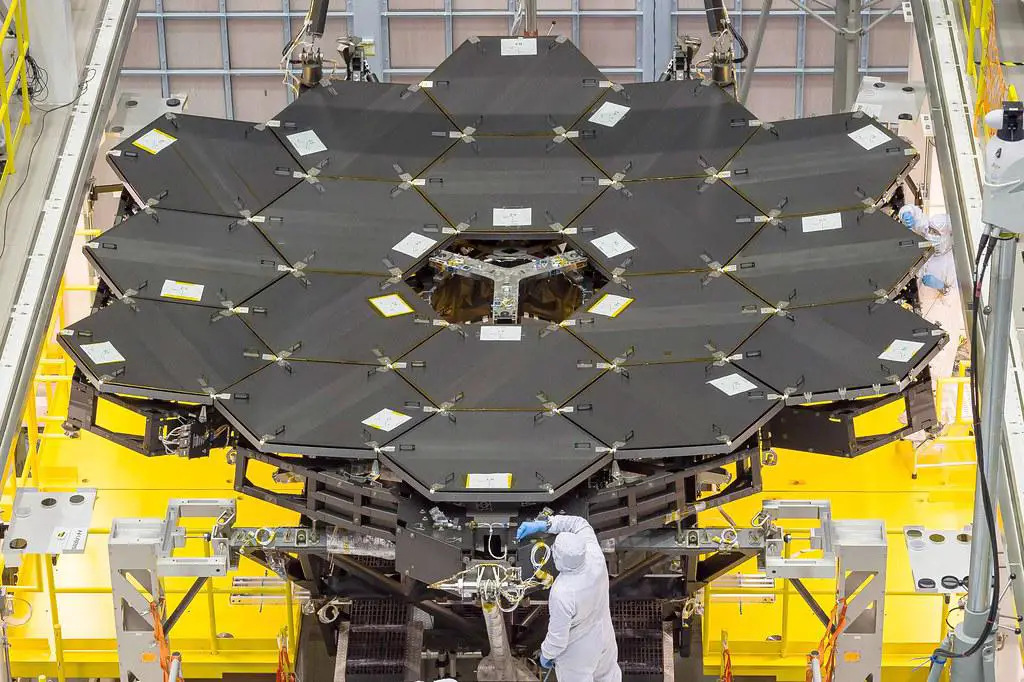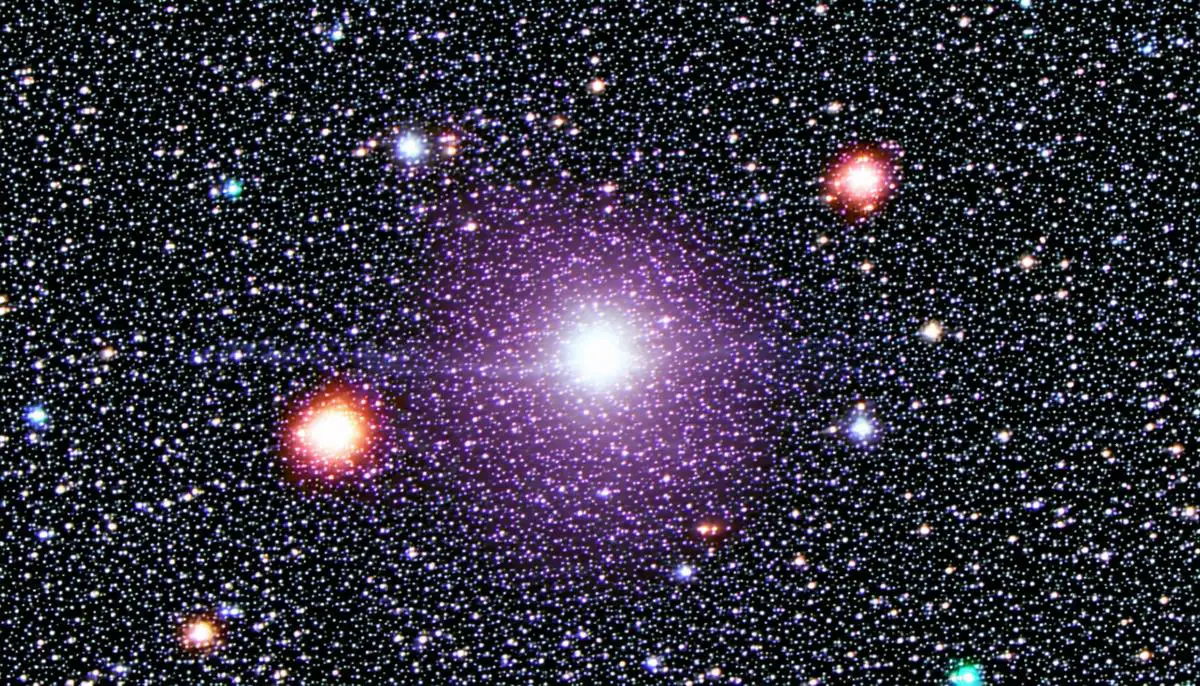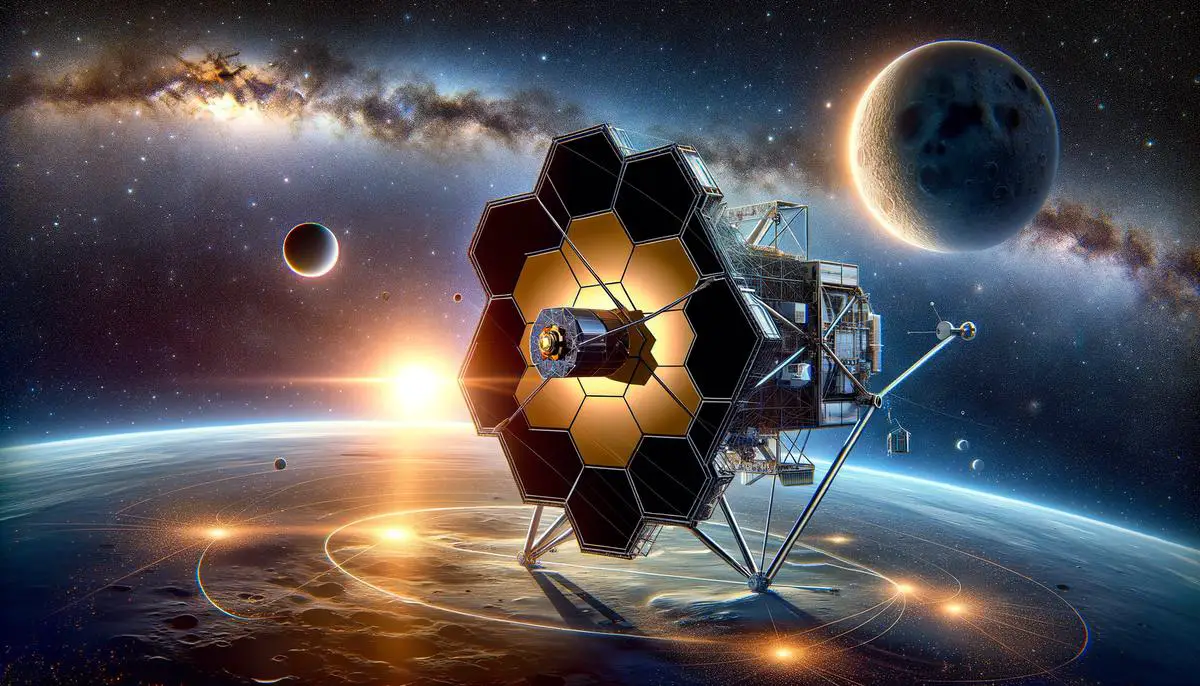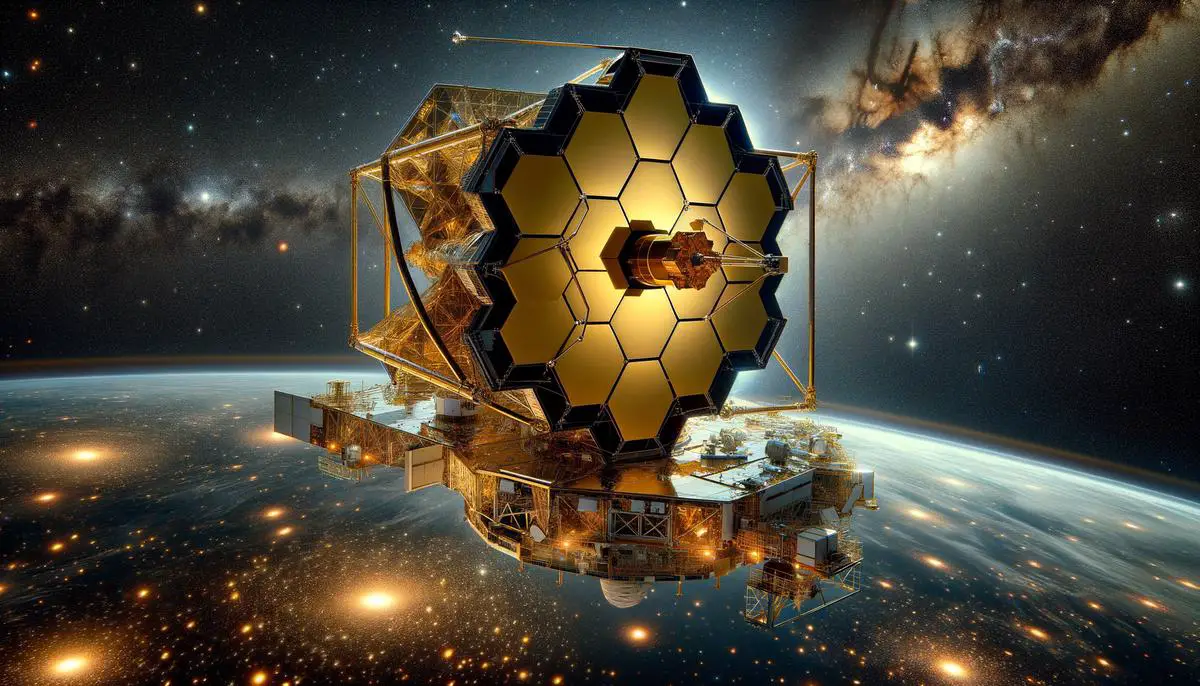The James Webb Space Telescope represents a significant advancement in space exploration technology. This article explores the telescope's design, capabilities, and impact on both science and everyday life.
Design and Construction
The James Webb Space Telescope is a product of international collaboration, involving NASA, ESA, and the Canadian Space Agency. Its design features a 6.5-meter primary mirror composed of 18 hexagonal beryllium segments coated in gold, chosen for its superior infrared reflection properties.
A key component is the sunshield, a five-layered structure the size of a tennis court that maintains the telescope's instruments at -233.2 degrees Celsius. This cold environment is crucial for detecting faint infrared signals from distant celestial objects.
The telescope's size necessitated a folding mechanism for launch, allowing it to fit inside the Ariane 5 rocket. After launch, it took two weeks for Webb to unfurl completely at Lagrange Point 2, about 1.5 million kilometers from Earth.
Webb houses advanced scientific instruments including:
- NIRISS (Near-Infrared Imager and Slitless Spectrograph)
- NIRCam (Near-Infrared Camera)
- MIRI (Mid-Infrared Instrument)
- NIRSpec (Near-Infrared Spectrograph)
Each instrument is designed to capture different infrared wavelengths, enabling Webb to peer through cosmic dust and observe ancient galaxies.
The project involved over 300 organizations spanning 14 countries, showcasing the power of international scientific cooperation. Beyond its astronomical mission, the technology developed for Webb has applications in various fields, from optics to simulation software.

Infrared Capabilities
The James Webb Space Telescope's infrared observation capabilities allow it to uncover cosmic phenomena hidden from visible light telescopes. Its suite of instruments includes NIRCam, NIRSpec, and MIRI, each serving specific roles in infrared astronomy.
NIRCam, the primary imager, detects near-infrared and redshifted visible light from early galaxies. It also assists in aligning Webb's mirror segments. NIRSpec can simultaneously analyze the spectra of up to 100 celestial bodies, providing data on their composition, temperature, and velocity.
MIRI extends Webb's reach into mid-infrared wavelengths, bridging the gap between near-infrared and far-infrared observations. It can detect heat signatures of objects obscured by interstellar dust, offering insights into star formation regions and exoplanet atmospheres.
These instruments collectively enable Webb to capture ancient light from the early universe, enhancing our understanding of cosmic origins and evolution.

Positioning and Orbit
The James Webb Space Telescope orbits at Lagrange Point 2, approximately 1.5 million kilometers from Earth. This location offers several advantages:
- Gravitational stability, allowing Webb to maintain its position with minimal fuel consumption.
- Uninterrupted view of the cosmos, free from Earth's shadow.
- Constant sunlight, enabling optimal function of the sunshield and maintaining the required cold temperatures for infrared observations.
- Reduced interference from Earth and Moon reflections.
This positioning allows Webb to continuously monitor distant galaxies and exoplanets without the interruptions experienced by Earth-orbiting telescopes. The fuel efficiency at this location also extends the telescope's operational life, expected to be at least a decade.

Scientific Instruments
The James Webb Space Telescope's scientific instruments work in concert to explore various aspects of the universe:
- Near-Infrared Imager and Slitless Spectrograph (NIRISS): Analyzes light from multiple distant stars and galaxies simultaneously, studying exoplanet atmospheres during transits.
- Fine Guidance Sensor (FGS): Ensures precise pointing of the telescope, maintaining stability for accurate imaging and data collection.
- Near-Infrared Camera (NIRCam): Serves as both an imager and wavefront sensor, crucial for detecting faint light from early galaxies and fine-tuning the telescope's mirror array.
- Mid-Infrared Instrument (MIRI): Extends Webb's observational range into mid-infrared, revealing thermal emissions of cold, distant objects and examining protoplanetary disks and star formation processes.
These instruments collectively enable Webb to paint a comprehensive picture of the universe's origins and evolution, from the earliest galaxies to the formation of stars and planets.
Technological Innovations
The development of the James Webb Space Telescope has led to advancements in various fields:
- Materials Science: The use of beryllium for Webb's mirrors, chosen for its stability in extreme temperatures, has influenced improvements in medical imaging devices.
- Optics: Technologies refined for Webb have enhanced precision in laser surgeries, including LASIK procedures.
- Simulation Software: Ansys Zemax OpticStudio, developed to predict Webb's behavior, has set new standards for simulation tools. These advancements benefit the development of medical instruments like endoscopes and thermal imaging systems for public health monitoring.
- Collaborative Innovation: The project's collaborative nature has fostered knowledge exchange across disciplines, demonstrating how space exploration can drive progress in seemingly unrelated fields.
These technological spillovers highlight how innovation in space exploration can generate unexpected breakthroughs in various sectors, improving daily life through sophisticated technology and collaborative ingenuity.
The James Webb Space Telescope stands as a testament to human ingenuity and collaboration. As it continues to provide new insights into the cosmos, its impact extends beyond astronomy, influencing technological advancements that benefit society in numerous ways.
- NASA. James Webb Space Telescope. NASA Science.
- Canadian Space Agency. James Webb Space Telescope. Government of Canada.
- Feinberg L, et al. The James Webb Space Telescope. Proc SPIE. 2019;11115:111150A.
- Geithner P, et al. James Webb Space Telescope (JWST) Project Overview. Proc SPIE. 2014;9143:914300.
- McDonald M, et al. The Phoenix cluster: Extreme star formation and AGN feedback two billion years after the Big Bang. Nature. 2023;618:260-263.
![]()
